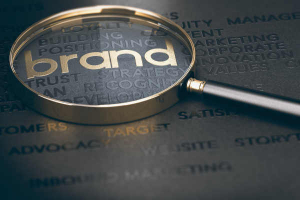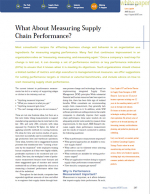What About Measuring Supply Chain Performance?
Throughout the last decade, companies have expended significant amounts of time and effort to re-engineer their supply chains through business process change and technology focused on implementing integrated Supply Chain Management (SCM) principles.
Most consultants’ recipes for affecting business change and behavior in an organization use ingredients for measuring ongoing performance.
Many feel that continuous improvement in an organization relies on “measuring, measuring, and measuring again.” Once a company’s road map for change is laid out, it can develop a set of performance metrics or key performance indicators (KPIs) to ensure that it knows when it is meeting its objectives.
Such organizations should choose a limited number of metrics and align executive to management-level measures; we offer suggestions for setting performance targets or internal or external benchmarks, and include advice on how to start measuring supply chain performance.
The current interest in performance measurements has led to a variety of supporting adages or cliches in the industry, such as:
- “Anything measured improves.”
- “What you measure is what you get.”
- “Anything measured gets done.”
- “You can’t manage what you do not measure.”
These are not new business ideas, but there are a few new twists. Using measurements to support manufacturing operations has its roots back to the late 19th and early 20th centuries with ideas espoused by Frederick W. Taylor, the father of applying scientific methods to running business.
His ideas for time and motion studies of operations were successfully used to scientifically manage production lines and warehouse operations.
These ideas, however, led to exaggerated business processes that transitioned into “running a business by the stopwatch” with employers treating human employees as if they were highly reliable, predictable machines to be monitored and controlled.
Over time, the workplace’s view of performance measurement became more humane and these exaggerated types of monitor and control methods fell out of favor, replaced by a focus on a measuring a business’ performance rather than that of the individual.
What’s Related



Favorites





